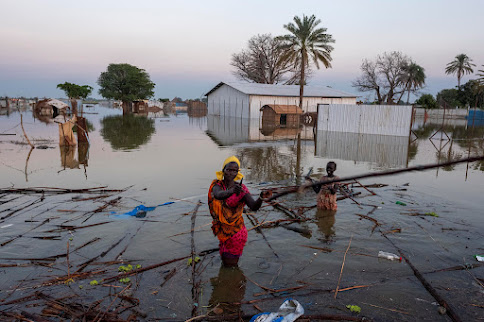Water plays a critical role in climate change, and the relationship between the two is complex. Climate change refers to long-term changes in temperature, precipitation patterns, and other climate-related factors, and it is primarily driven by the accumulation of greenhouse gases (GHGs) in the Earth’s atmosphere. Water, in its various forms (liquid, solid, and vapor), is intimately linked to these changes and can both influence and be influenced by climate change. Here are some key ways in which water and climate change in Global warming are interconnected:
Water And Climate Change In Global Warming And Its Real Facts
Water Cycle Changes: Climate change can alter the global water cycle. Rising temperatures can lead to increased evaporation rates, changing precipitation patterns, and more intense storms. This can result in more frequent and severe droughts, floods, and changes in the availability of freshwater resources.
Sea Level Rise: One of the most direct impacts of climate change on water is sea level rise. As global temperatures rise, polar ice caps and glaciers melt, causing sea levels to rise. This can lead to coastal erosion, increased flooding in coastal areas, and the salinization of freshwater sources in coastal regions.
Extreme Weather Events: Climate change can intensify extreme weather events such as hurricanes, cyclones, and typhoons. These events often bring heavy rainfall and storm surges, leading to flooding and water-related disasters.
Melting Glaciers: Glaciers are important freshwater reservoirs in many parts of the world. Climate change causes glaciers to melt at an accelerated rate, contributing to rising sea levels and affecting the availability of freshwater resources for communities downstream.
Ocean Acidification: Increased levels of carbon dioxide (CO2) in the atmosphere not only lead to global warming but also cause the oceans to become more acidic. This can harm marine ecosystems, including coral reefs and shellfish populations, which can, in turn, impact the food chain and the livelihoods of coastal communities.
Changes in Water Quality: Changes in temperature and precipitation patterns can affect the quality of freshwater sources. Warmer temperatures can lead to the growth of harmful algae blooms in lakes and rivers, while altered precipitation patterns can affect the dilution of pollutants in water bodies.
Impact on Ecosystems: Changes in temperature and water availability can disrupt ecosystems, affecting aquatic species and their habitats. For example, some fish species may struggle to survive in warmer waters or face challenges during migration due to altered river flows.
High Water Intensity Level Of Global Warming
Water as a Mitigation Tool: Water bodies can serve as important tools for mitigating the impacts of climate change. Wetlands, for instance, can sequester carbon and provide flood control, while reforestation and afforestation efforts can help maintain water resources and reduce the effects of climate change.
Adaptation Strategies: As climate change impacts become more pronounced, communities and governments are implementing various water-related adaptation strategies, such as building resilient infrastructure, improving water management practices, and enhancing water storage and distribution systems.
In summary, water and climate change are intricately connected, and the impacts of climate change on water resources are wide-ranging and significant. Addressing climate change and its impacts on water is a crucial part of efforts to mitigate the effects of global warming and ensure the sustainability of water resources for future generations.








